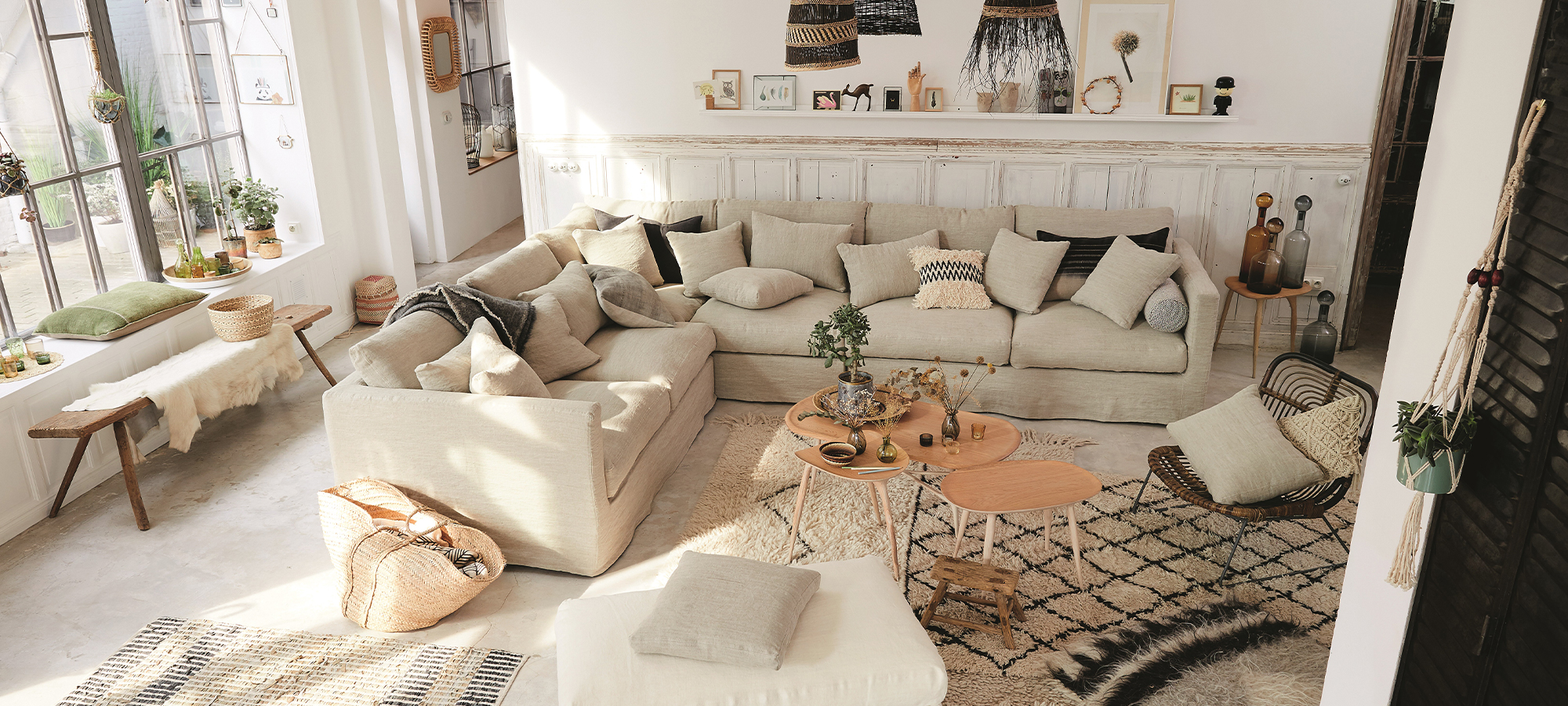- date_range 19 Feb 2024
- person Home Spirit USA
- toc Guide
- remove_red_eye 433 views
Menu
Made in France, sustainable and Design Sofa
Linens, with their timeless elegance and unmatched quality, have been an integral part of human civilization for centuries. From the grandiose palaces of ancient Egypt to the contemporary homes of today, linens have adorned and enriched living spaces worldwide. Let's embark on a captivating journey through history to uncover the intriguing origins and evolution of these exquisite textiles.
Ancient Beginnings:
The story of linens traces back to ancient civilizations, particularly in the fertile lands of the Nile Delta. It was in ancient Egypt, around 4,000 years ago, where linen production first flourished. The Egyptians cultivated flax, from which linen fibers are derived, and mastered the intricate art of weaving. Linen fabric became synonymous with luxury and royalty, adorning the tombs of pharaohs and gracing the halls of majestic palaces.
Symbolism and Prestige:
In ancient Egypt, linens held profound symbolic significance beyond their utilitarian value. They were associated with purity, light, and wealth. Linens adorned the elite in society, symbolizing their elevated status and refined taste. The intricate weaving techniques and exquisite craftsmanship elevated linen textiles to coveted treasures sought after by nobility and aristocracy across the ancient world.
Spread of Expertise:
As civilizations flourished and trade routes expanded, the art of linen production spread far and wide. From the Mediterranean to Mesopotamia, Greece to Rome, linen weaving became a revered craft, passed down through generations. Each culture infused its unique flair into linen textiles, creating diverse patterns, designs, and uses tailored to their customs and traditions.
Medieval Renaissance:
During the Middle Ages, linen continued to hold sway as one of the most prized fabrics in Europe. Monasteries became centers of linen production, where monks diligently cultivated flax and wove fine fabrics for ecclesiastical garments and household linens. Linen's durability, breathability, and natural luster made it indispensable for clothing, bedding, and tableware, symbolizing purity and prosperity in medieval society.
Industrial Revolution:
The advent of the Industrial Revolution in the 18th and 19th centuries revolutionized linen production, ushering in an era of mechanization and mass manufacturing. Steam-powered looms replaced traditional handloom weaving, significantly increasing efficiency and output. Linen became more accessible to the burgeoning middle class, transcending its aristocratic origins to become a staple of everyday life.
Modern Resurgence:
In the modern era, linens continue to captivate with their timeless allure and eco-friendly appeal. As awareness of sustainability grows, consumers are increasingly drawn to the natural properties of linen—biodegradable, renewable, and requiring minimal water and pesticides for cultivation. Linen's resurgence in fashion, home décor, and hospitality industries reflects a renewed appreciation for its understated elegance and ecological integrity.
Conclusion:
From its illustrious origins in ancient Egypt to its enduring presence in contemporary society, the story of linens is a testament to human ingenuity, creativity, and craftsmanship. As we weave through the annals of history, we discover a rich tapestry of culture, tradition, and innovation, woven into every thread of linen fabric. As we embrace the legacy of linens, let us continue to cherish and celebrate these timeless treasures that enrich our lives with beauty, comfort, and sustainability.

